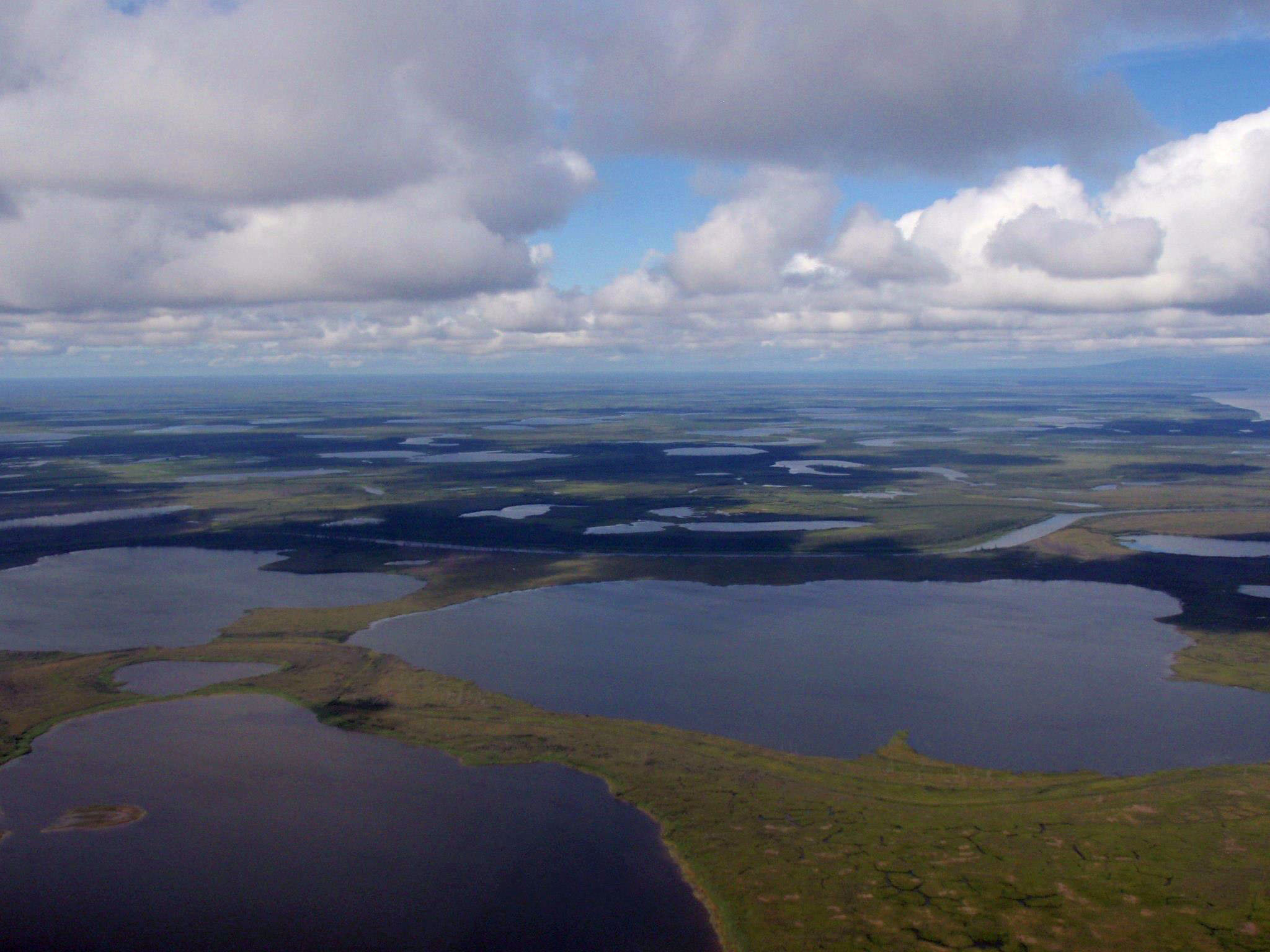UAF researchers featured in permafrost science overview
Jeff Richardson
907-474-6284
Jan. 11, 2022

Thermokarst lakes, formed when permafrost thaws and creates surface depressions that fill with melted water, are a prominent feature of Arctic landscapes.
A newly published overview of recent permafrost science includes contributions from seven University of Alaska Fairbanks researchers who helped review how long-frozen terrain is being rapidly affected by climate change.
The journal Nature Reviews Earth & Environment released the permafrost-themed issue on Jan. 11. The publication synthesizes the past decade of permafrost research, combining information from various studies to provide a big-picture look at the subject.
The issue includes papers about how changes to permafrost are affecting lakes, coastlines, carbon emissions, infrastructure, ground temperatures, trace elements and vegetation.
“They wanted to put together a collection of review papers focused on different aspects of permafrost, a holistic collection that can be a benchmark reference going forward,” said Benjamin Jones, a research professor at UAF’s Institute of Northern Engineering.
Jones is lead author of a paper about lakes and drained lake basins in the journal, which looks at how those common features are affecting the permafrost balance in the Arctic landscape.
Numerous lakes are being created in the Arctic as ice-rich permafrost turns to water, leading to the loss of additional permafrost beneath the surface. Meanwhile, existing lakes regularly dry up or drain on the Arctic tundra, offering an environment in those basins where permafrost can be created.
An overview of the research shows that those dueling factors are creating more permafrost-rich terrain rather than destroying it, because more lakes are draining than forming. Jones said numerous studies have looked at Arctic lakes and drained basins separately rather than the system as a whole.
“We haven’t put it all together in a systems perspective, looking at understanding how those systems work together,” Jones said. “We needed to step back and take a look at the whole of the landscape.”
UAF researchers Louise Farquharson, Mikhail Kanevskiy, Benjamin Gaglioti and Amy Breen also contributed to the overview of permafrost lakes and drained lake basins.
Jones and Farquharson also contributed to a paper in the journal that focused on the changing Arctic coastline. Data stretching back to the 1950s shows widespread erosion in coastal sites throughout the Arctic, including changes in the coastline at locations in Siberia, Northwest Alaska and Canada.
All but one of the 14 sites reviewed in the study is losing ground, with erosion rates roughly doubling since the early 2000s.
Vladimir Romanovsky, an emeritus professor at UAF’s Geophysical Institute, is senior author of a paper that analyzes the changing thermal state of permafrost.
The research collectively shows widespread and persistent warming of permafrost in polar and high-elevation regions in the past four decades. Consistent patterns have emerged across global permafrost regions where temperature ranges, ground ice contents and snow cover are similar.
Researchers found that the highest permafrost temperatures were recorded in 2018-19 at most sites in the Arctic and sub-Arctic. Permafrost is projected to continue thawing in response to anticipated warming scenarios.
David McGuire, an emeritus professor at UAF’s Institute of Arctic Biology, co-authored a paper that considers emissions from the nearly 1,700 billion metric tons of frozen and thawing carbon. The paper reviews advances being made in tracking the release of greenhouse gases from that trapped carbon, as well as the unpredictable emissions that will be released by increasingly common wildfires in the Arctic.
ADDITIONAL CONTACT: Rod Boyce, UAF Geophysical Institute public information officer, rcboyce@alaska.edu
NOTE TO EDITORS: The four Nature Reviews Earth & Environment papers authored by UAF researchers are available upon request.


